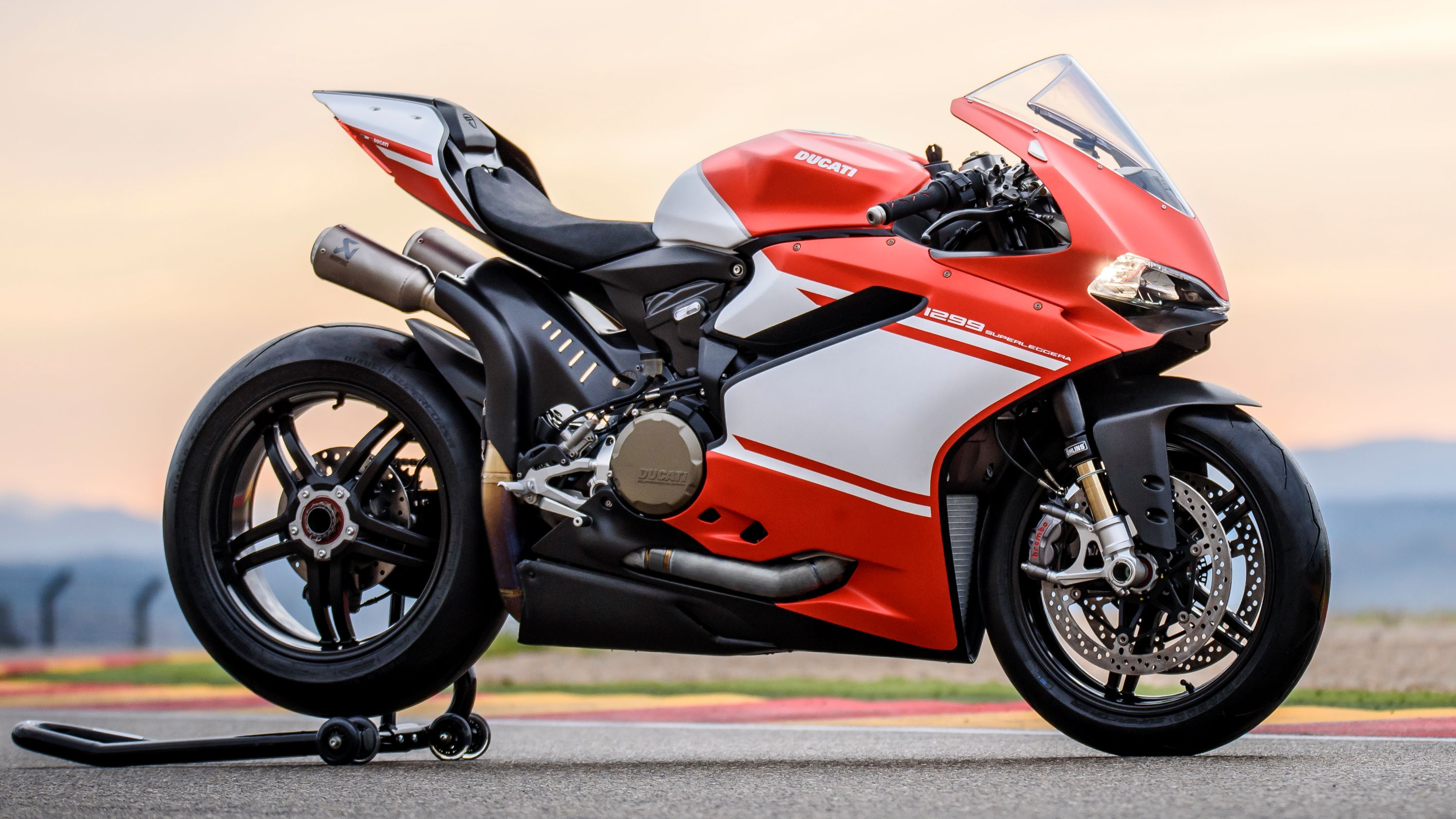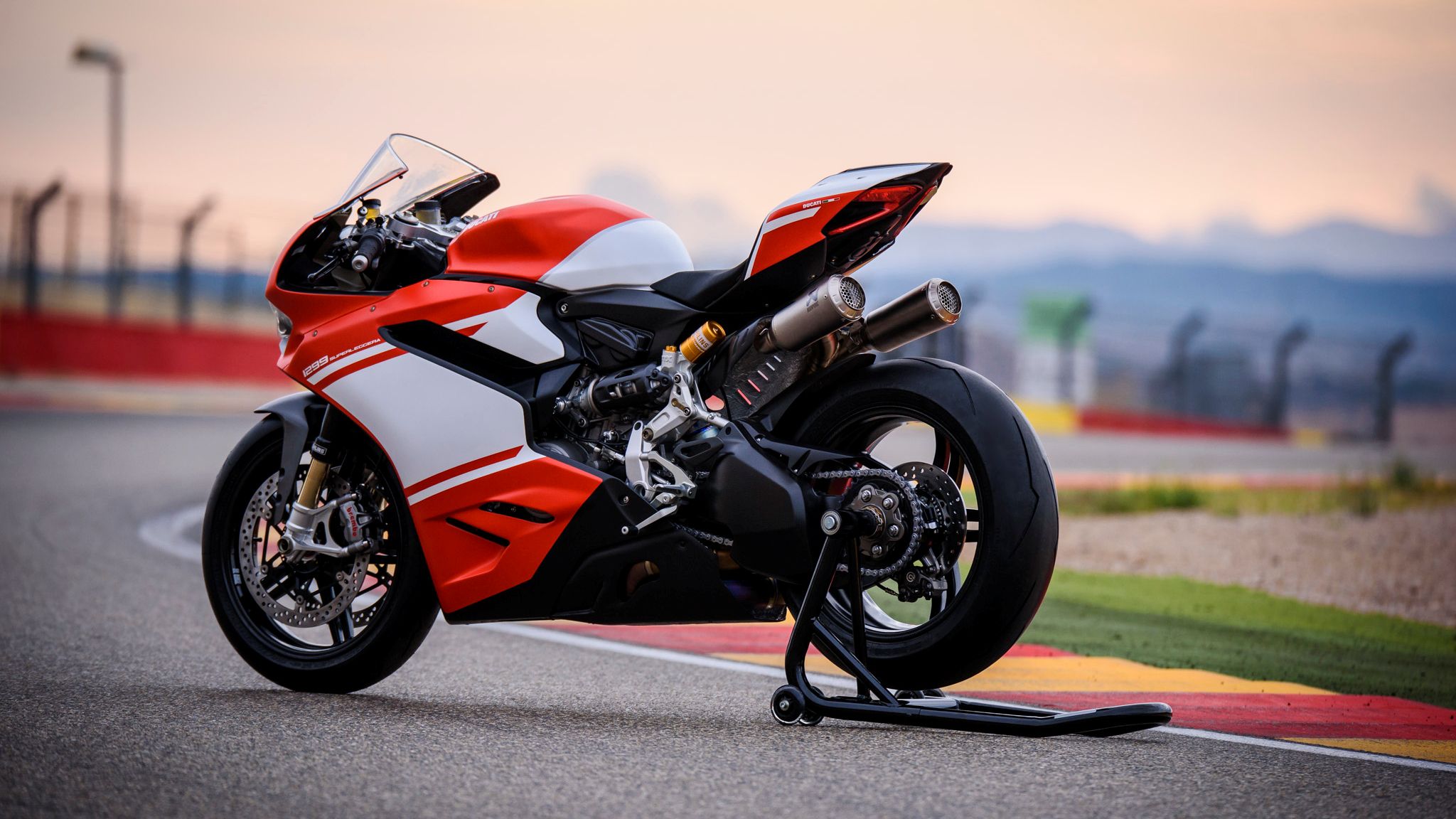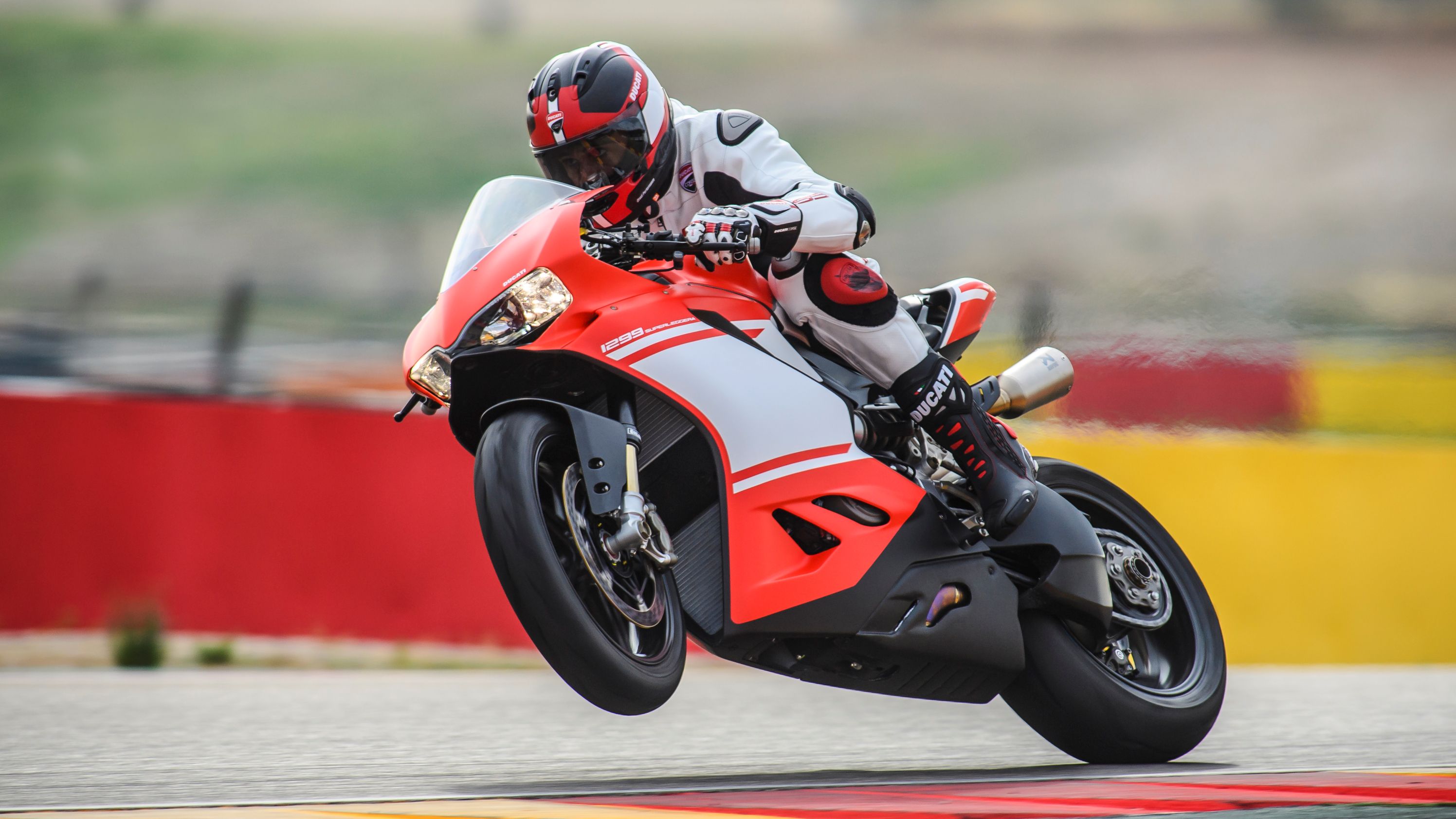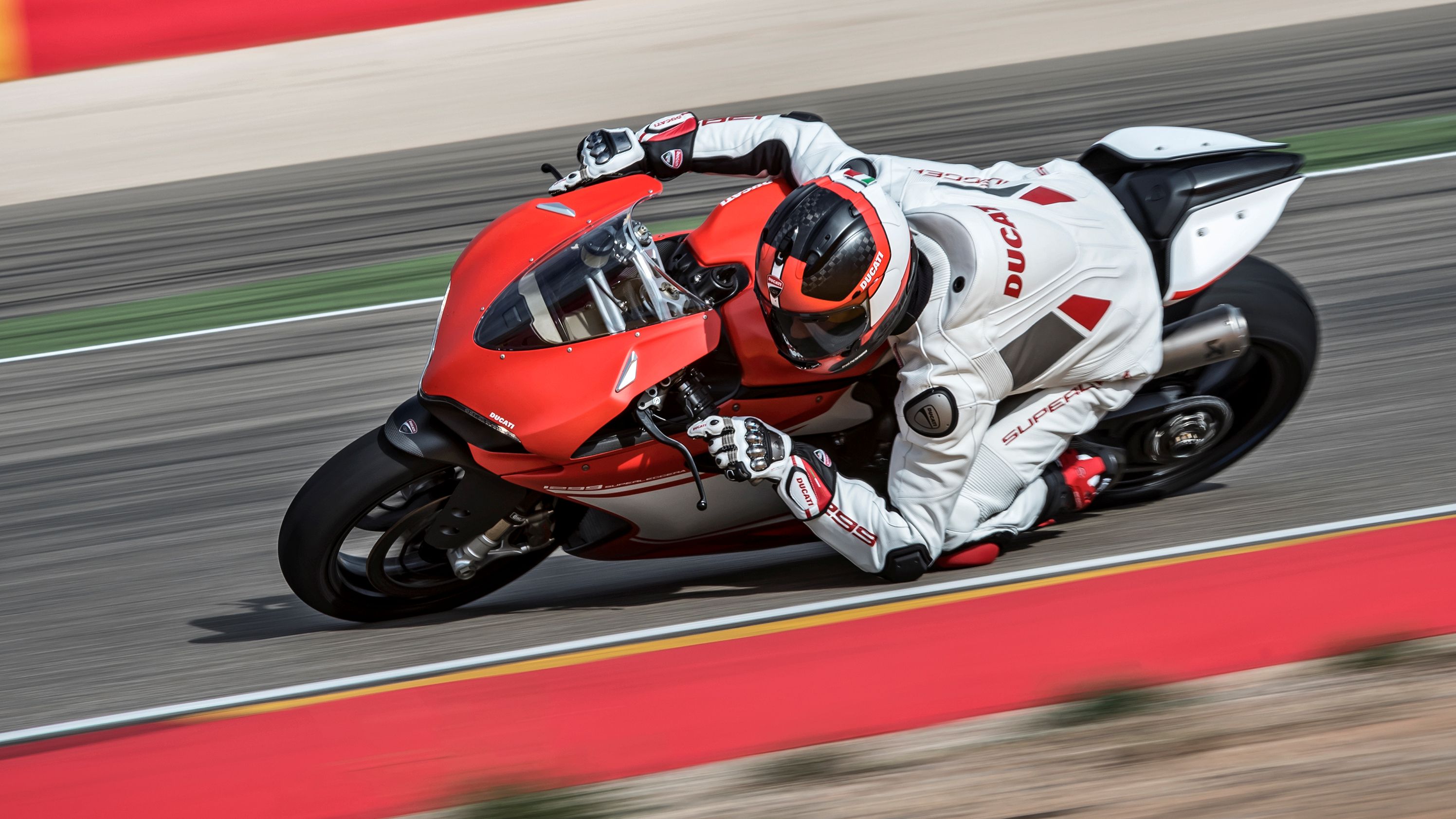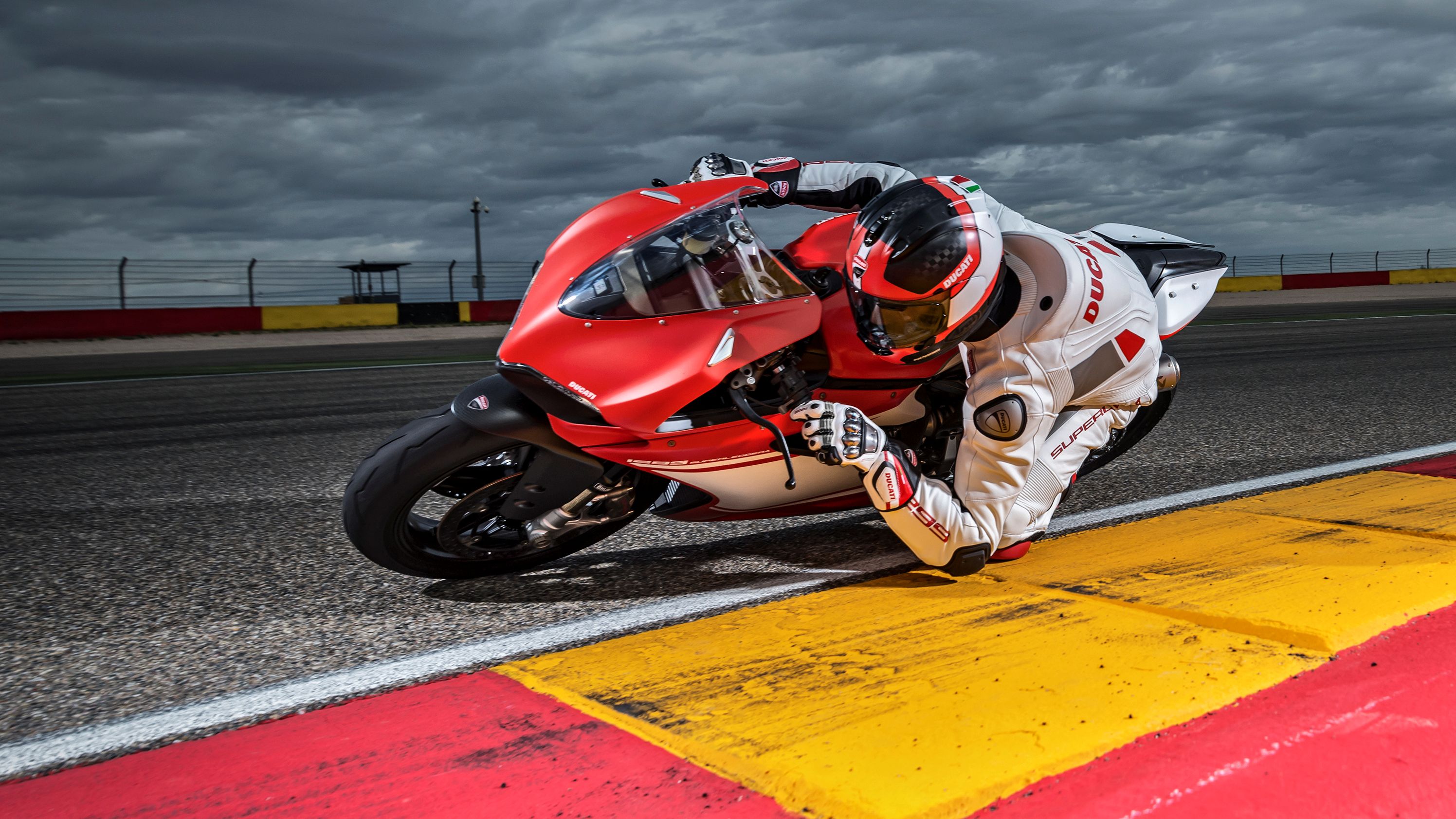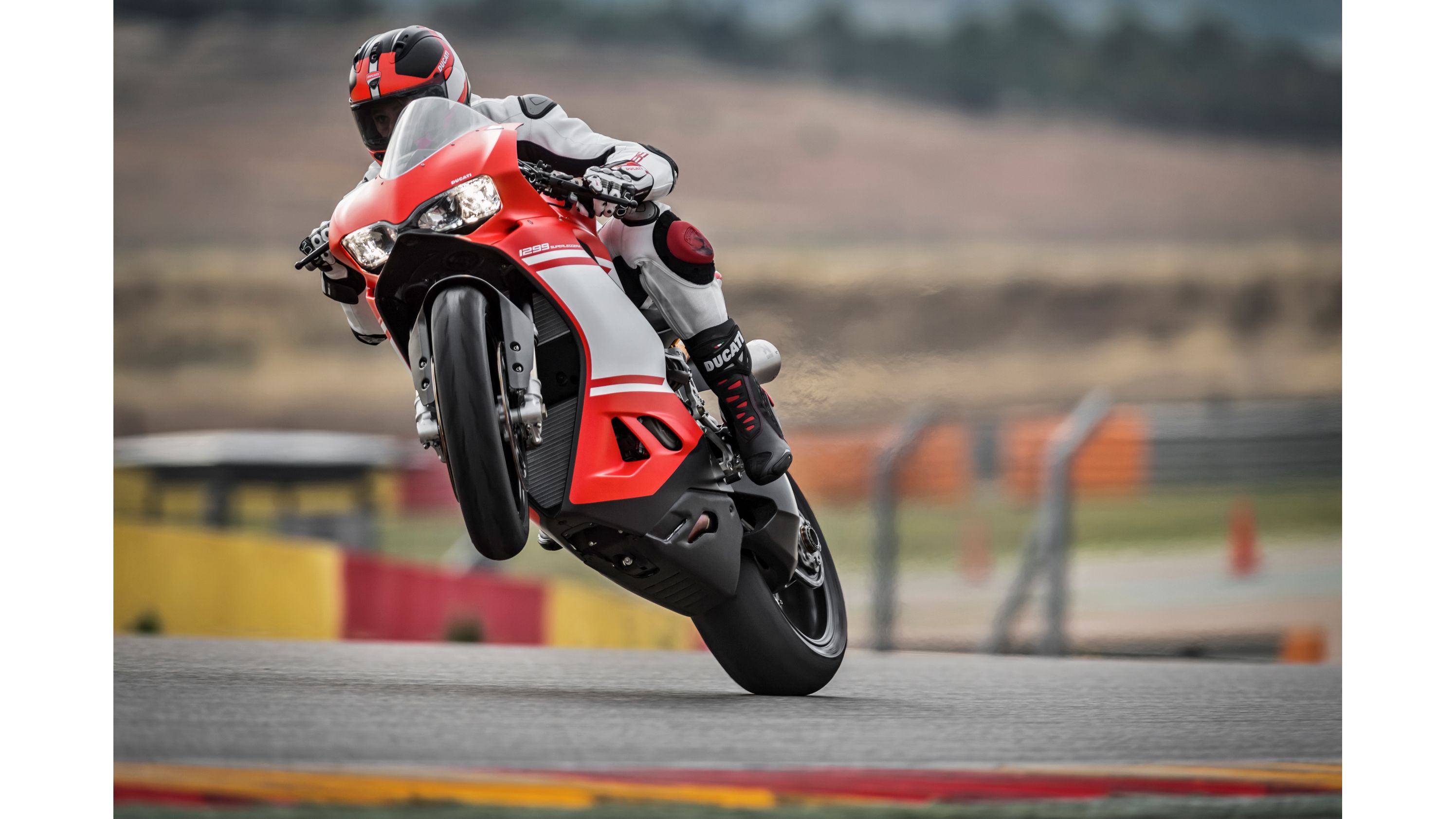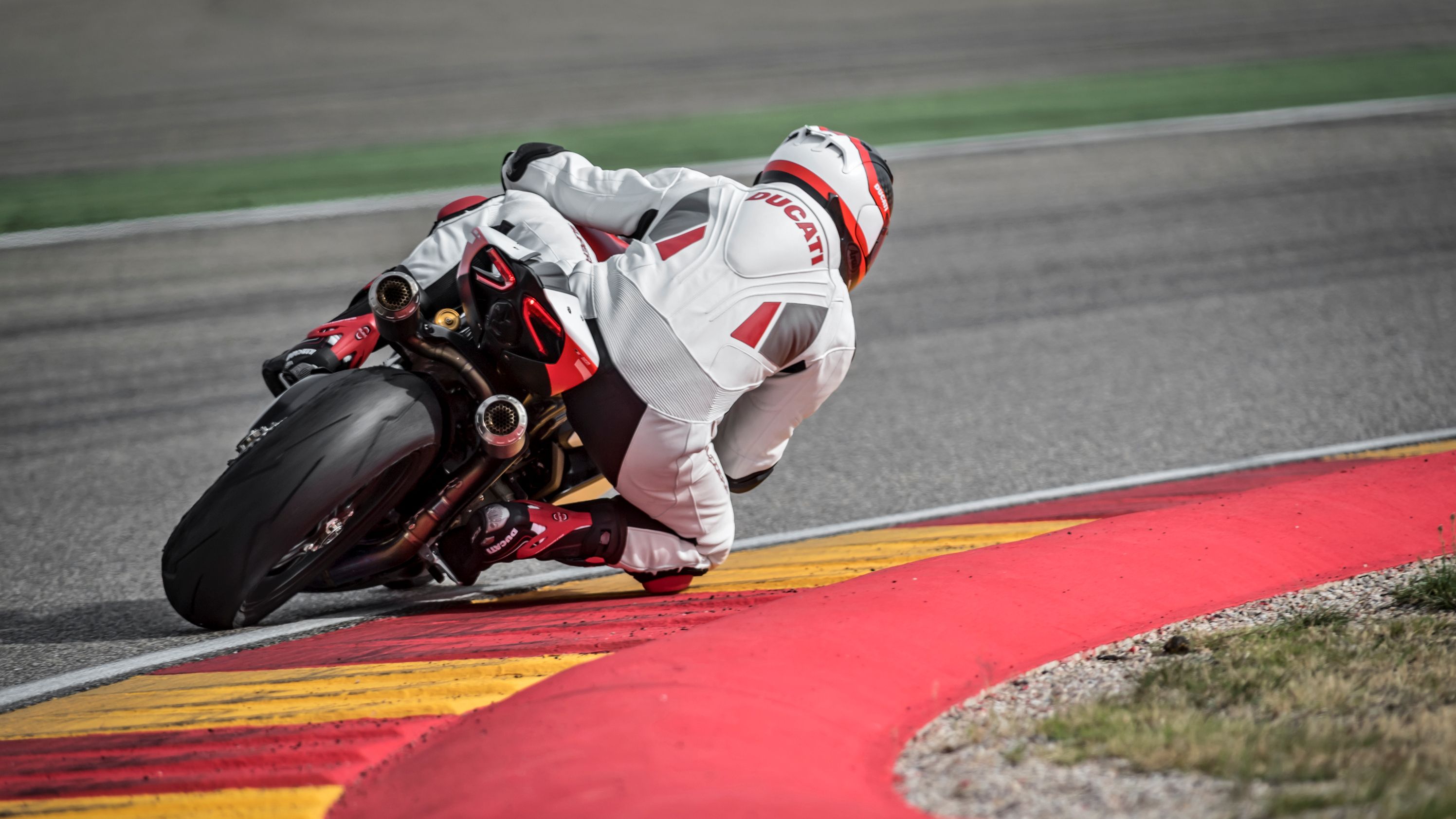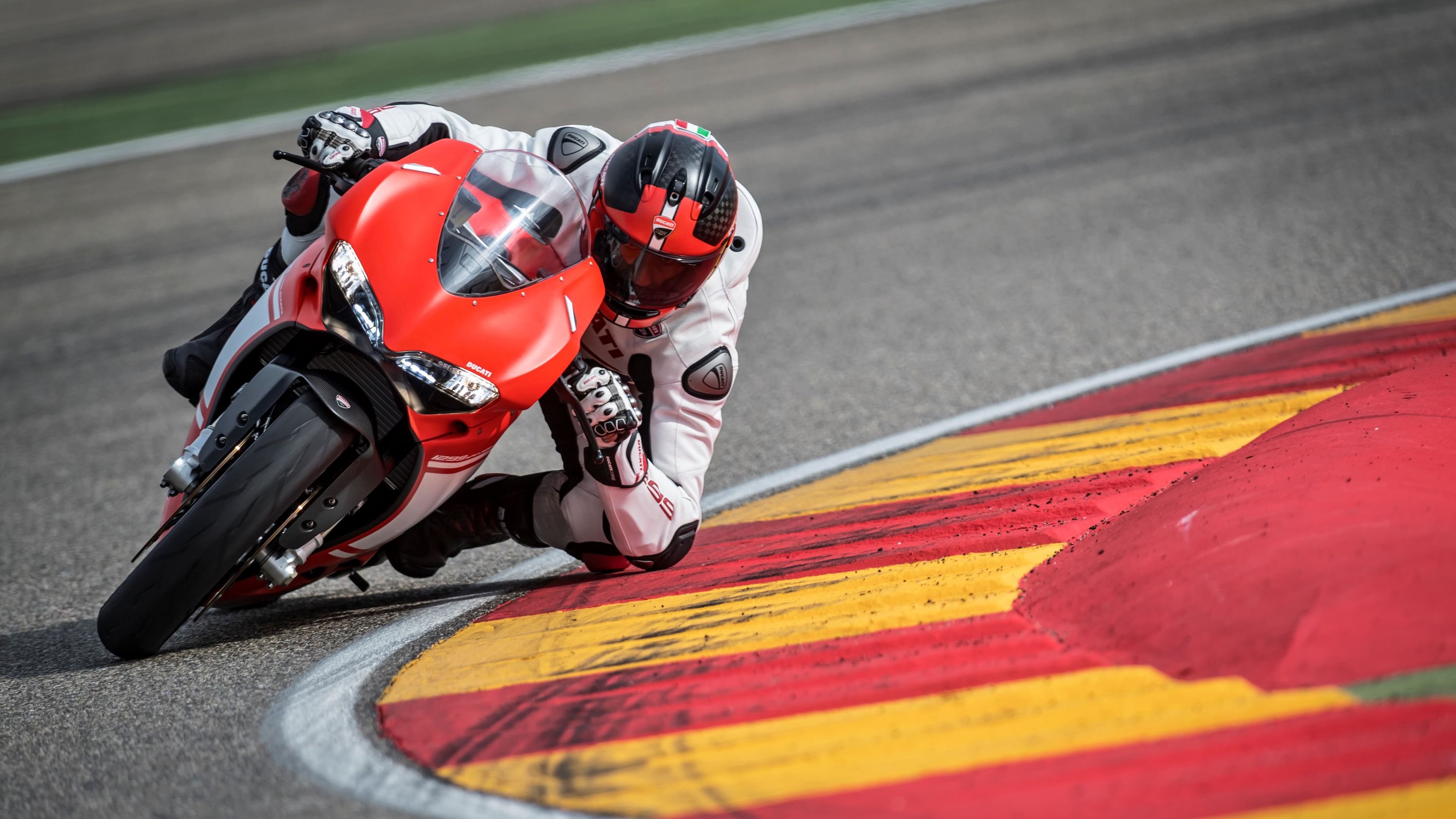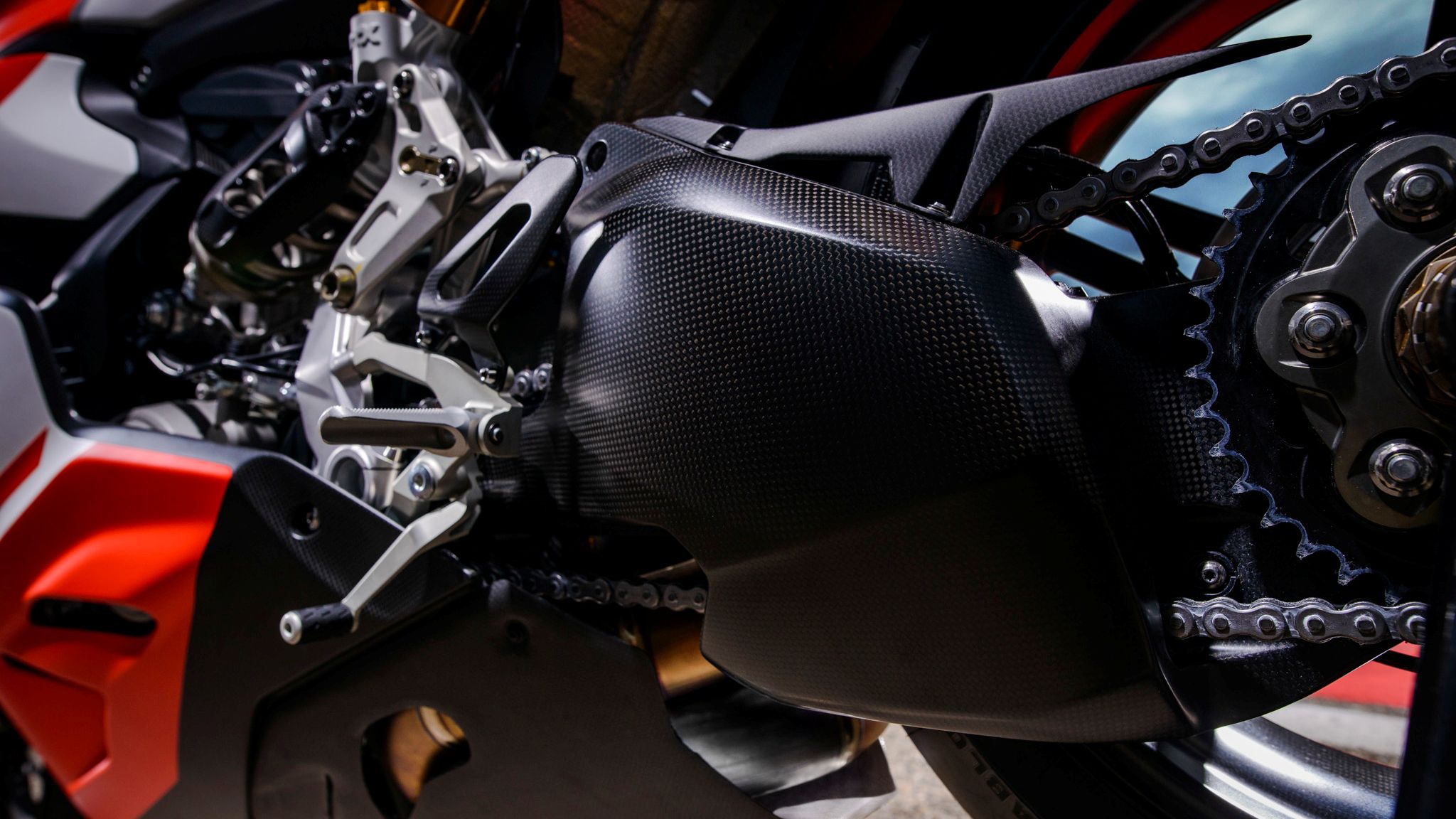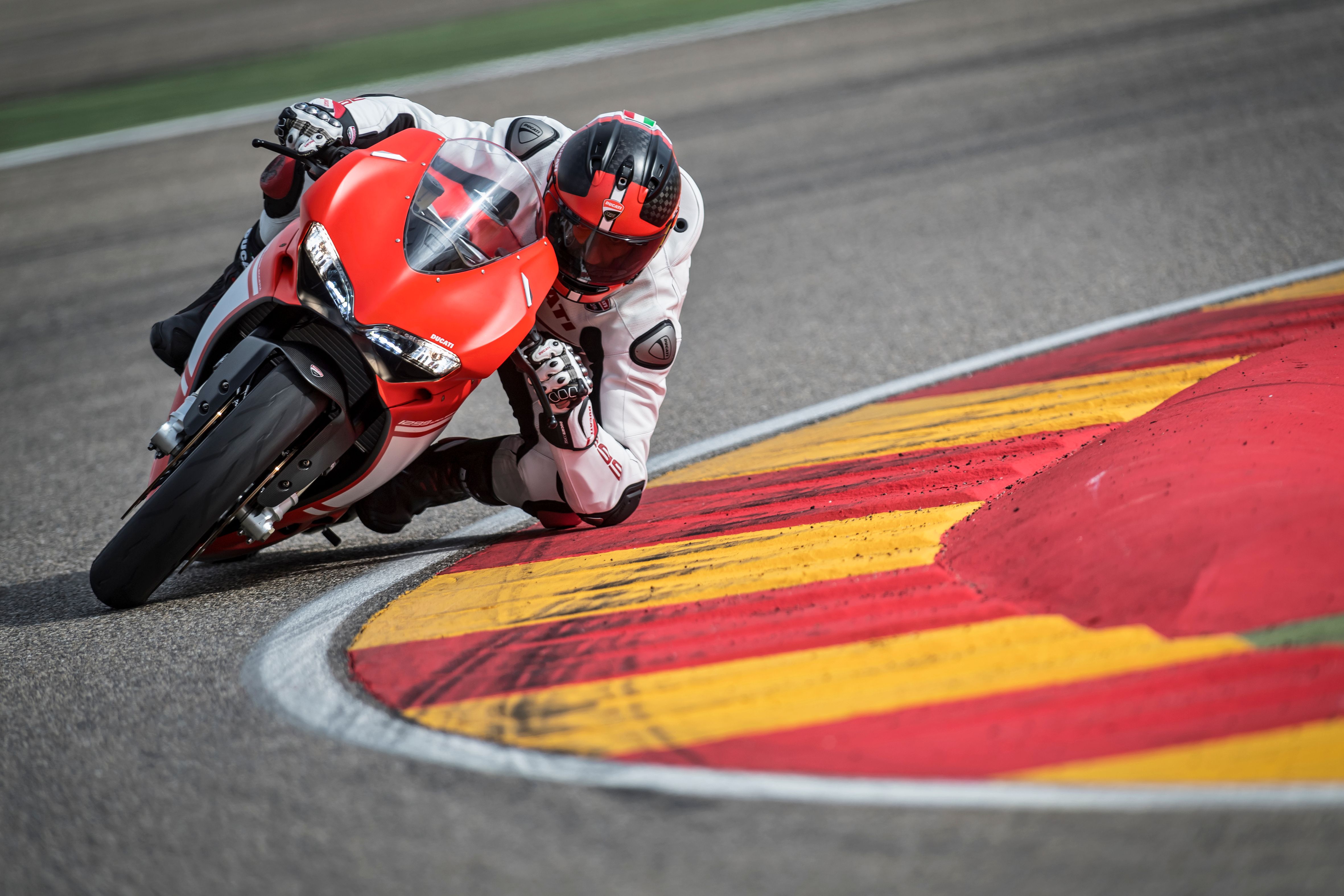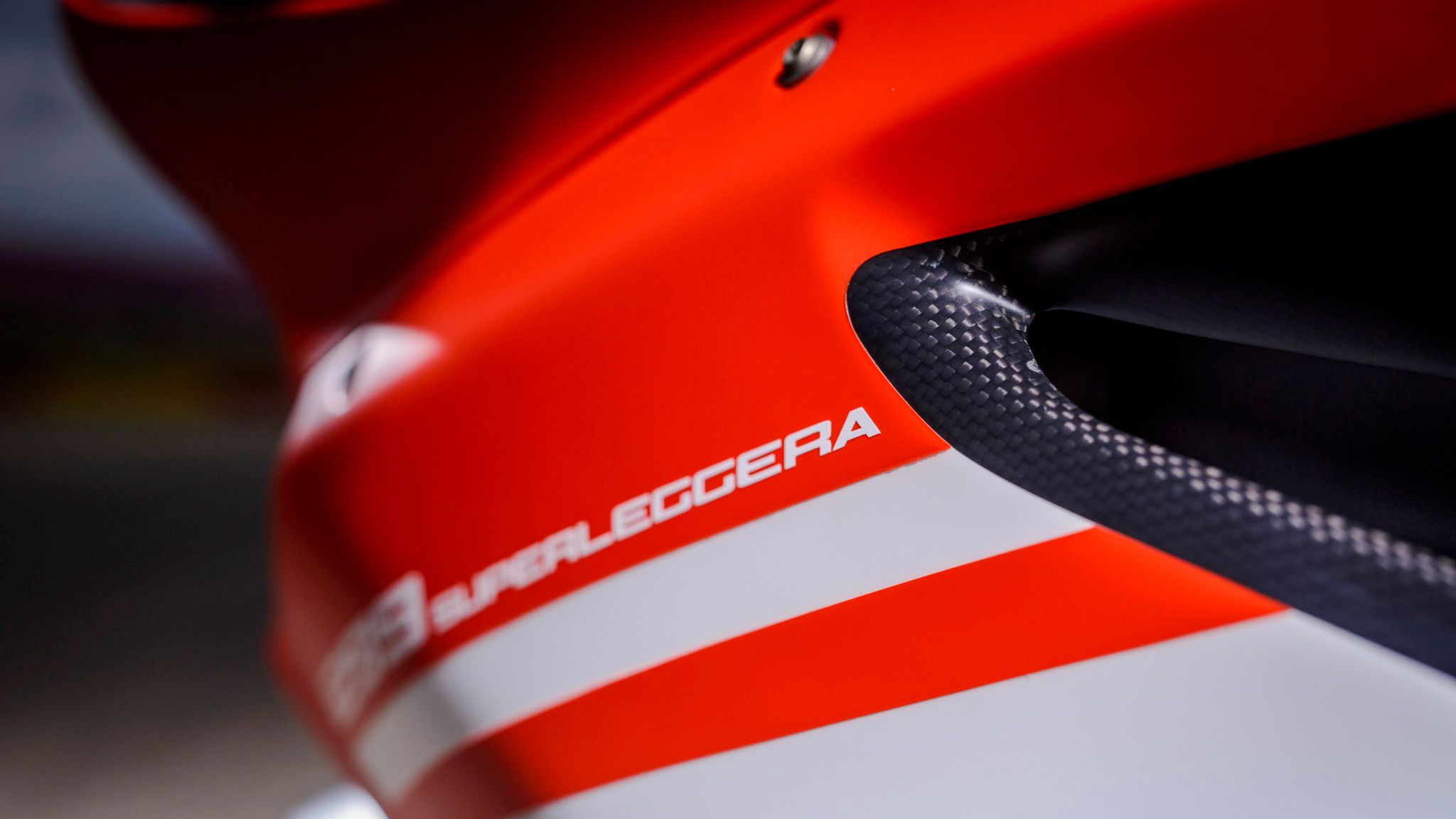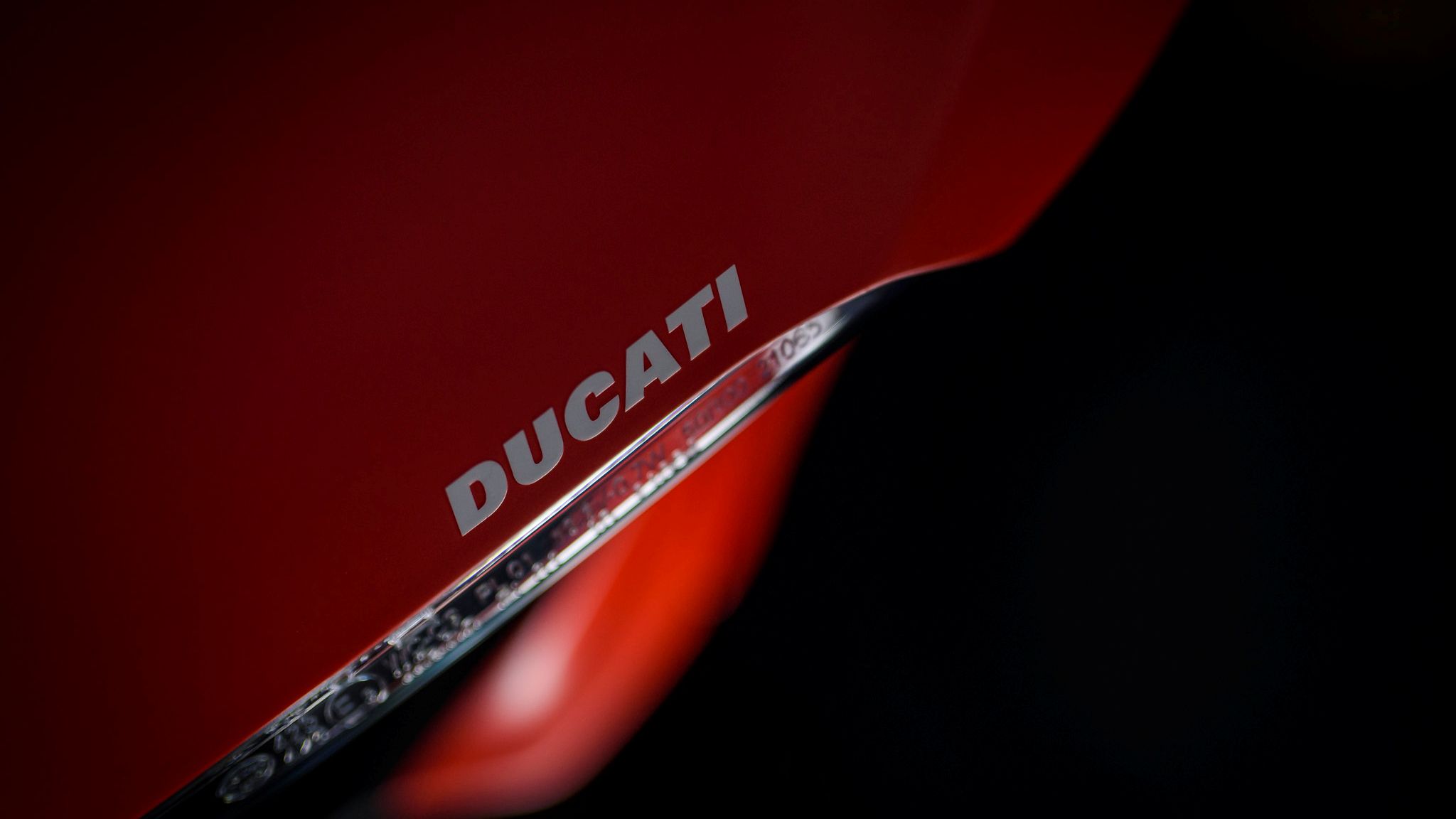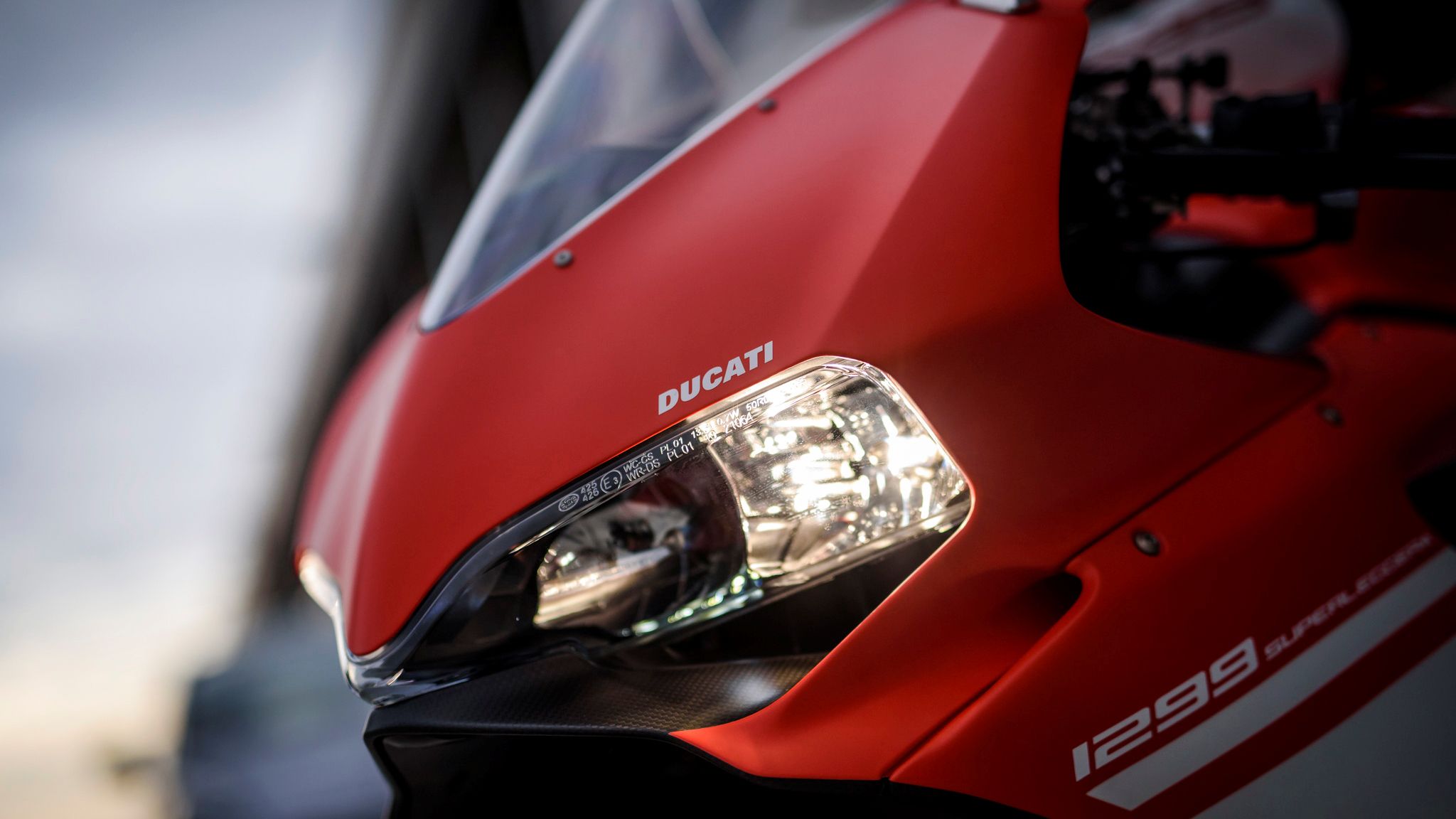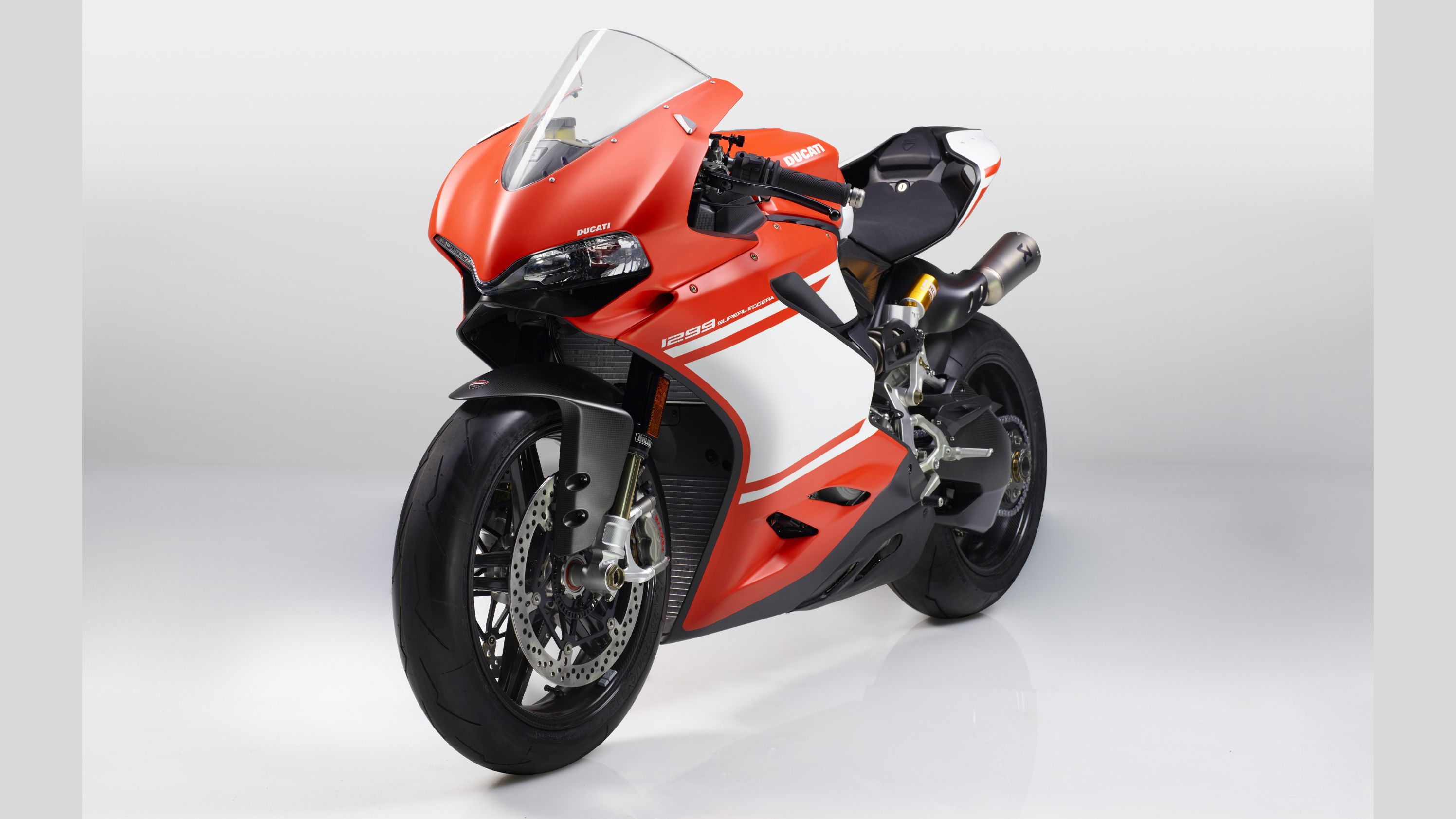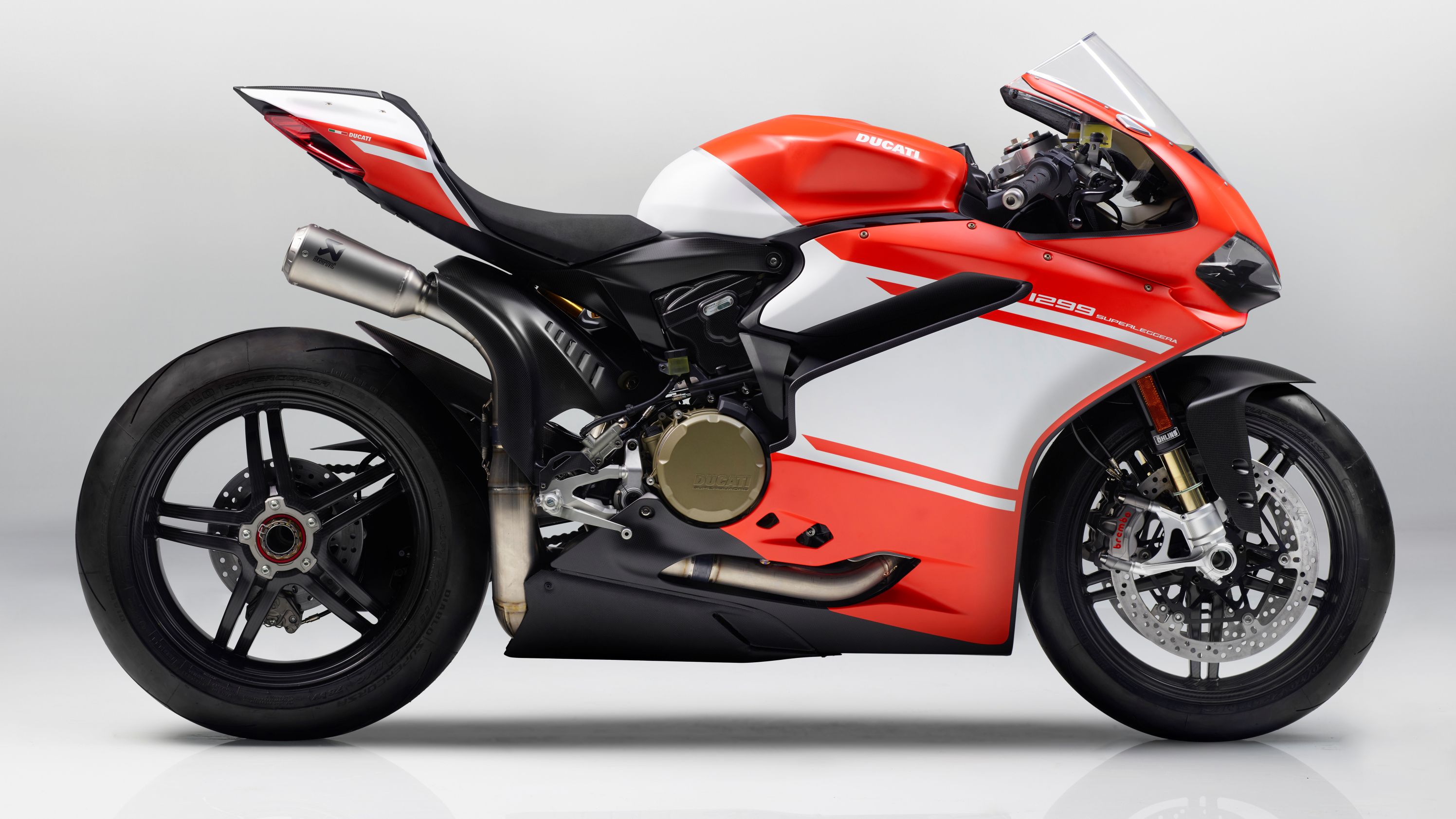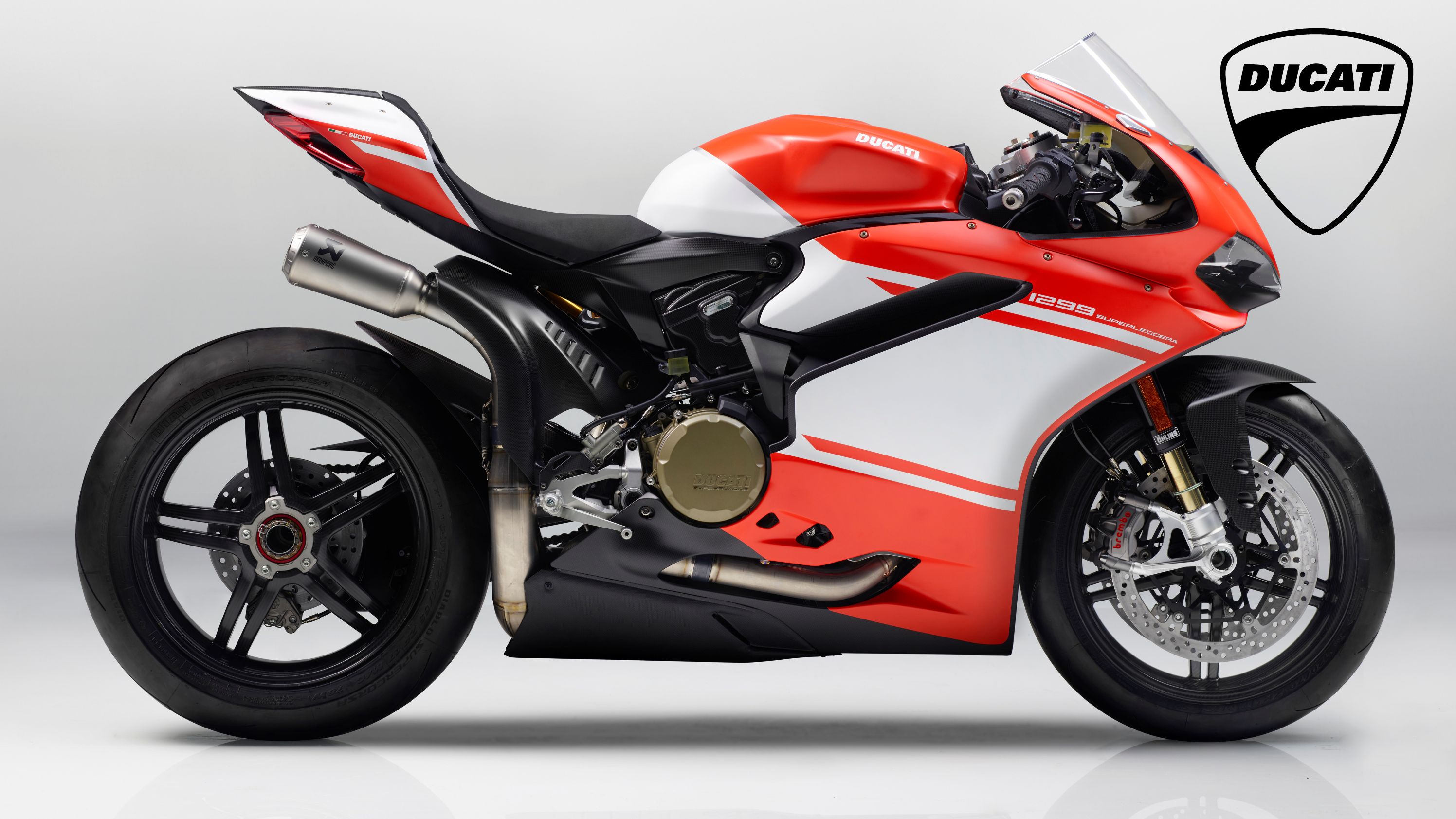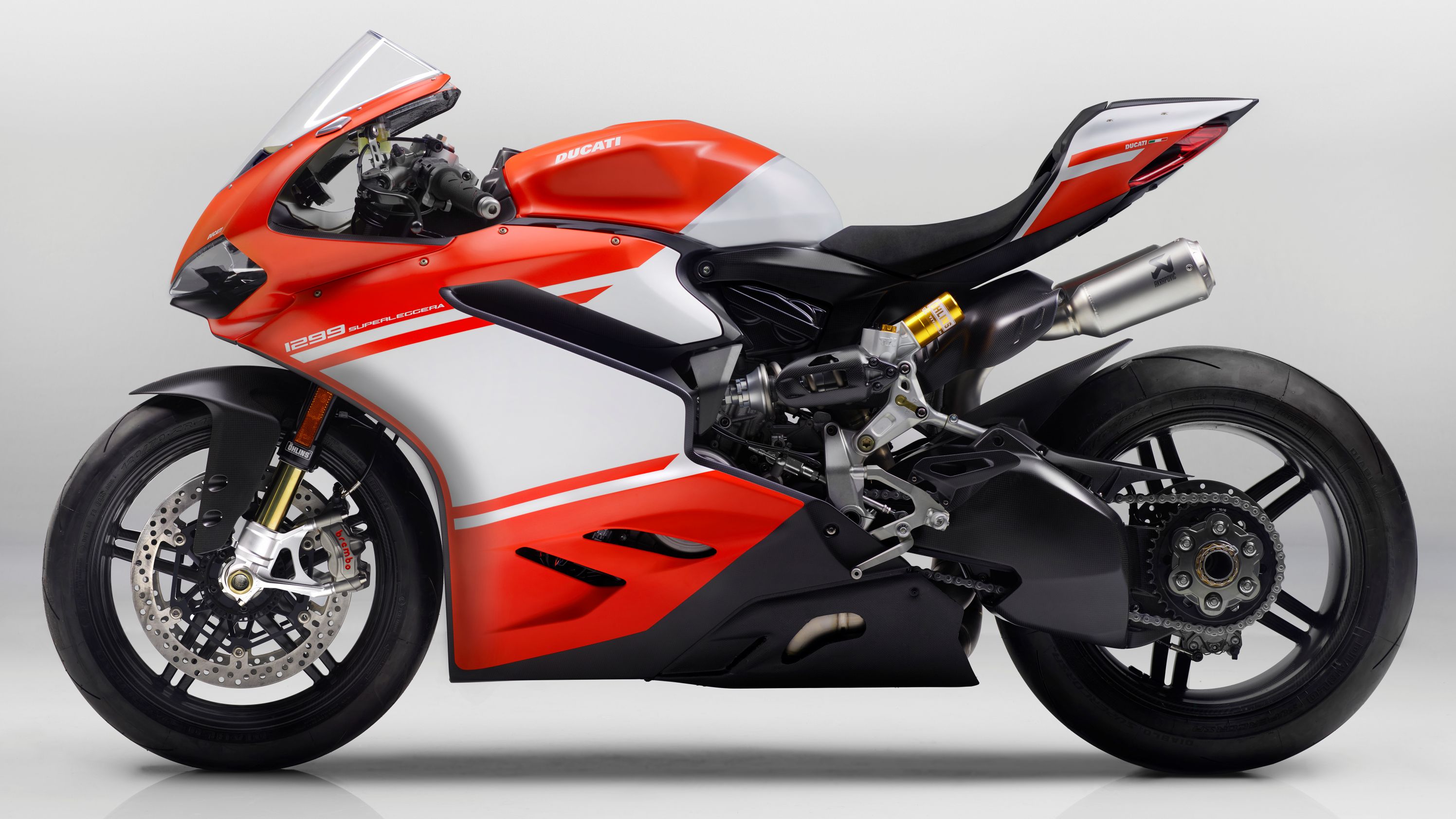Ducati raises the bar for semi-production race bikes with its limited-edition 1299 Superleggera. A space-age, carbon-fiber frame, swingarm and wheels carry Ducati's most powerful twin-cylinder mill to date with 215 horsepower on tap to push a mere 368 pounds. Yeah, that's right. The good news is that Ducati installed everything it could as far as electronic features go to help riders control all that power and keep the thing dirty-side down. I'm talking a veritable alphabet soup of gadgetry here, so let's dig in and start deciphering it.
Continue reading for my review of the Ducati 1299 Superleggera.
2017 Ducati 1299 Superleggera
- Make: Array
- Model: 2017 Ducati 1299 Superleggera
- Engine/Motor: L-Twin
- [do not use] Vehicle Model: Array
Design
Built for speed, the windtunnel-tested shape was painstakingly designed to minimize losses to weight and drag. The structure depends upon a monocoque system that uses the carbon-fiber fairing as a stressed member to complete the assembly. Needless to say, there were significant weight savings here, especially when you consider that the frame itself comes made of carbon-fiber material, as well. Inserts made of 7075 aluminum are laminated into the structure at key points to reinforce and strengthen without adding appreciable weight or bulk.
The front fairing sports an almost evil-looking visage with “angry alien” headlights below a clear bubble screen. Clip-on bars pull the rider forward over the low-slung, aluminum fuel tank, and jockey-mount footpegs pull the feet out of harm's way while placing the rider in prime position to throw around some body English.
Make no mistake; this is a pure-D racing machine that comes with everything you need to remove the plate holder and other street-use doodads just in case you're one of the lucky owners who actually wants to hit the track.
Chassis
The carbon-fiber magic continues down to the very bones with a minimal skeletal structure that relies heavily upon the strength of the stressed skin and engine to make it all work. A single-side, carbon-fiber swingarm finishes out the structure, and weight savings over the 1199 model total 5.7-pounds between just the frame and swingarm.
The factory tapped Öhlins for the suspension components all around. A pair of 43 mm, usd, FL 936 forks float the front end on 4.7-inches of travel and full-spectrum adjustability. Lightened tubes and billet fork bottoms trims three pounds off the forks, while a titanium spring on the TTX36 rear shock drops an additional pound from the assembly with 5.1-inches of travel. The shock comes fully adjustable, and the factory added the option to switch between a progressive and a flat linkage for further control over the ride.
A pair of 17-inch wheels round out the rolling chassis and toe the line with a 3.1-pound weight savings that really cuts down on the unsprung total. Pirelli's race-rated Diablo Supercorsa SP hoops ride the carbon rims to make that final, critical connection to the tarmac. Braking duties fall to the four-pot, Brembo Monobloc M50 calipers and dual, 330 mm discs up front, and the twin-pot caliper and 245 mm disc in back. A Brembo MCS 19.21 radial front pump delivers the power to the front binders, and both ends benefit from Ducati's corner-sensing ABS feature.
Drivetrain
As great as this bike looks so far, the real magic is found in the engine and its control systems. Much like the rest of the bike, the factory took steps to lighten the engine through the use of titanium valves and fasteners. Aluminum cylinder liners, titanium connecting rods and tungsten balance weights contribute to the 4.6-pound advantage the Superleggera mill enjoys over the version that goes into the 1299 Panigale.
This engine is massively oversquare with a 116 mm bore and only a 60.8 mm stroke, but don't take that to mean it slacks off in the torque department; at 9,000 rpm it manages to grind out 108 pound-feet of torque backed up by 215 ponies that come on at 11 grand for what Ducati has dubbed its most powerful twin cylinder to date. Redesigned pistons pump the compression up to a sizzling 13-to-1, so yeah, you can forget about burning anything less than the best road champagne you can find.
A water jacket and radiator manages the waste heat, and Ducati's signature Desmodromic valvetrain times the four-valve heads with their high-lift cams, and oversized yet lightweight titanium valves. Each combustion chamber mounts not one but two fuel injectors, for a total of four, all under the control of the Mitsubishi EFI.
Ready for some alphabet soup? Hope you brought an appetite. The Bosch 6D Inertial Measurement Unit (IMU) reads and monitors the bike's position, and helps to manage the slide control (DSC), wheelie control (DWC EVO) and traction control (DTC EVO) along with input from the wheel-speed sensors. A ride-by-wire throttle control enables the Engine Brake Control (EBC) that balances the forces working on the rear tire during aggressive downshift braking; a role that is supported by the slipper clutch. The Power Launch (DPL) aids in takeoffs from a standing start with three settings for variable levels of intervention, and Duc's Quick Shift (DQS) allows for clutchless shifts. Quite a laundry list of electronic goodies, don't you think?
Pricing
The price, well, it's kind of a moot point, isn't it? If you didn't get the memo, the limited-edition run of 500 units sold out pre-production, so the $89,000 pricetag hardly matters now.
Competitors
Since carbon fiber is such a prominent material on the Superleggera, I couldn't help but think of another carbon-based creation; the HP4 Race from BMW. It's fair to say that both incorporate a fair amount of engineering and testing of the cowling shape to make them as fast as possible, but BMW saved itself the trouble of mounting lights and mirrors for road use; the HP4 is meant for closed-circuit use only. Beemer utilized carbon-fiber engineering in the frame, but doesn't take the plastic treatment nearly as far as Ducati does on the Superleggera, even though the HP4 also runs as a stressed-skin, monocoque assembly.
Öhlins makes out like a bandit with its products making an appearance at every opportunity across the board, and neither gain any advantage here. One thing the HP4 has going for it is the steering damper, but that's a minor consideration.
Beemer's four-cylinder mill cranks out the same 215 ponies as Ducati's L-twin, but the natural trade off when you increase cylinders is torque, and so Beemer's plant only manages 88 pounds of grunt versus 108 pound- feet from the Duc. Both factories packed on every electronic bell and whistle a racer could want, and so it's pretty much a draw here as well.
The biggest selling point for the Beemer is, well, that you can actually still get one. Price is still TBA but estimated at just over the 100K mark. Seriously though, if you're looking at buying one of these bikes, is price really an object?
He Said
“Simply amazing. From the shape of the lines to the performance of the engine and the materials in-between, the Superleggera does not disappoint. With a price tag like that, most of us were never going to score one anyway, so does it matter that they are sold out? To me, that just makes them that much cooler.”
She Said
My wife and fellow motorcycle writer, Allyn Hinton, says, "When it comes to these superbikes, I don't even know what to say. What I said about the HP4 Race can also be said about the 1299 Superleggera, "It’s like what you always wanted sex to be, but weren’t brave enough to try it" and I'll stand by that."
Specifications
|
Engine: |
Superquadro: L-twin cylinder, 4 valve per cylinder, Desmodromic, liquid cooled |
|
Displacement: |
1,285 cc |
|
Bore X stroke: |
116 x 60.8 mm |
|
Compression ratio: |
13.0:1 |
|
Power: |
158.1 kW (215 hp) @ 11,000 rpm |
|
Torque: |
146.5 Nm (108,0 lb-ft) @ 9,000 rpm |
|
Fuel injection: |
Mitsubishi electronic fuel injection system. Twin injectors per cylinder. Full Ride-by-Wire elliptical throttle bodies with aerodynamic valve and optimized trumpets |
|
Exhaust: |
2-1-2 system, primary tubes in titanium. Twin titanium mufflers. 2 lambda probes and 2 catalytic converters |
|
Gearbox: |
6 speed with Ducati Quick Shift (DQS) up/down |
|
Primary drive: |
Straight cut gears; Ratio 1.77:1 |
|
Ratio: |
1=37/15 2=30/16 3=27/18 4=25/20 5=24/22 6=23/24 |
|
Final drive: |
Chain; Front sprocket 15; Rear sprocket 39 |
|
Clutch: |
Hydraulically controlled slipper/self-servo wet multiplate clutch |
|
Frame: |
Monocoque in carbon fiber |
|
Front suspension: |
Fully adjustable 43mm USD Öhlins FL 936 fork with TiN treatment, billet fork bottoms and lightweight stress-optimized outer tubes, lightweight springs |
|
Front wheel: |
10-spoke carbon fiber 3.50" x 17" |
|
Front tyre: |
Pirelli Diablo Supercorsa SP 120/70 ZR17 |
|
Rear Suspension: |
Fully adjustable single Öhlins TTX36 shock with titanium spring, adjustable linkage between progressive/flat. Carbon fiber single-sided swingarm |
|
Rear Wheel: |
10 spokes carbon fiber 6.00” x 17” |
|
Rear tyre: |
Pirelli Diablo Supercorsa SP 200/55 ZR17 |
|
Wheel travel (front/rear): |
120 mm (4.7 in) - 130 mm (5.1 in) |
|
Front brake: |
2 x 330 mm semi-floating discs, radially mounted Brembo Monobloc Evo M50 4-piston callipers with Cornering ABS, Brembo MCS 19-21 adjustable-ratio front brake master cylinder, remote lever adjuster |
|
Rear brake: |
245 mm disc, 2-piston calliper with Cornering ABS |
|
Instrumentation: |
Colour TFT display |
|
Dry weight: |
156 kg (343.9 lb) |
|
Kerb weight: |
167 kg (368.2 lb) |
|
Seat height: |
830 mm (32.48 in) |
|
Wheelbase: |
1.456 mm (57.32 in) |
|
Rake: |
24° |
|
Front wheel trail: |
98 mm (3.86 in) |
|
Fuel tank capacity: |
17 l - 4.5 gallon (US) |
|
Number of seats: |
Single seat |
|
Standard equipment: |
Riding Modes, Power Modes, ABS cornering, DTC, DWC, DSC, DPL, DQS u/d, EBC, DDA+ w/GPS module, Fully RbW. Rapid setting DTC, DWC, DSC, EBC |
|
Additional equipment: |
Track Kit: Titanium racing exhaust, racing windshield, machined mirror block-off plates, license plate mount removal plug, side-stand removal kit, front and rear paddock stands, paddock bike cover |
|
Warranty: |
24 months unlimited mileage |


